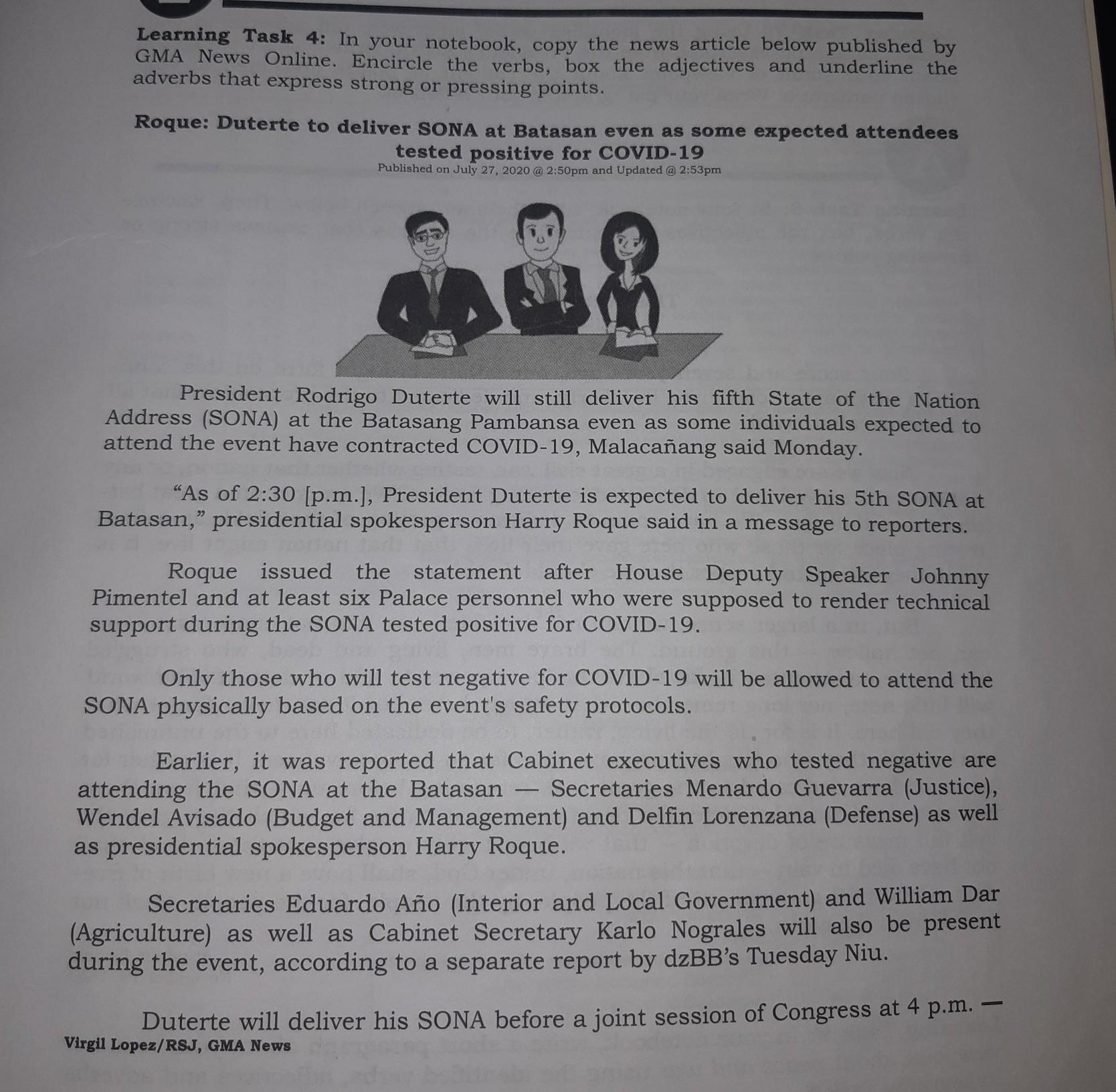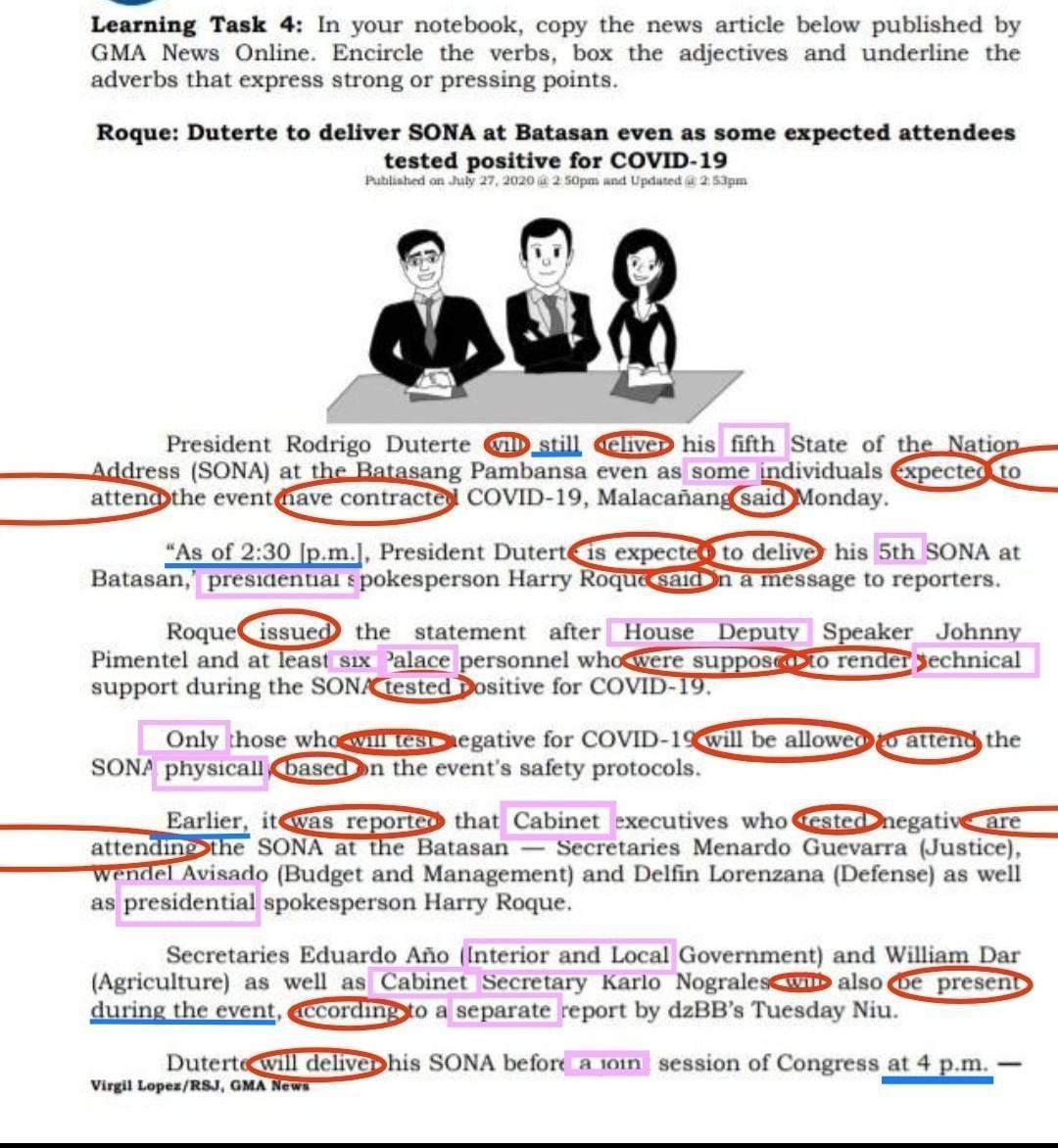→ In the picture below, you can see the answer. Or, you can look at this list:
Here are the verbs used in this news story:
- Will
- Still
- Deliver
- Expected
- Contracted
- Attend
- Said
- Message
- Render
- Issued
- Support
- Tested
- Test
- Safety
- Allowed
- Attending
- Safety
- Report
- Well
Here are the adjectives in the same article:
- Still
- Even
- Individuals
- Least
- Supposed
- Technical
- Positive
- Negative
- Based
- Reported
- Executives
- Present
- Separate
- Before
- Session
Here are the adverbs in the article:
Further explanation:What are adverbs?
An adverb is a word that tells how, where, or how often we do something (which is called a "verb"). For instance,
- Here, she has a job. (adverb of location)
- She often helps her coworkers out by translating emails. (frequency adverb)
- She types at a fast pace. (adverb of manner)
Which one is it?
We describe a noun with an adjective and a verb with an adverb. So, we usually use the verb "to be" with an adjective. For instance,
- She is a very fast runner.
- He is a very careful driver.
And if we replace the nouns in these two sentences with verbs, we get:
- She runs very fast.
- He drives very carefully.
Only the verbs look, sound, smell, and seem can be used with adjectives instead of adverbs. We use these words to talk about what we see, what we smell, or what we hear. Adverbs of manner help us describe actions in a lot of detail and make us much more expressive. Start noticing when people use them, and try adding them to your own speech.
Learn more about adjectives here: https://brainly.ph/question/205418
#SPJ2






